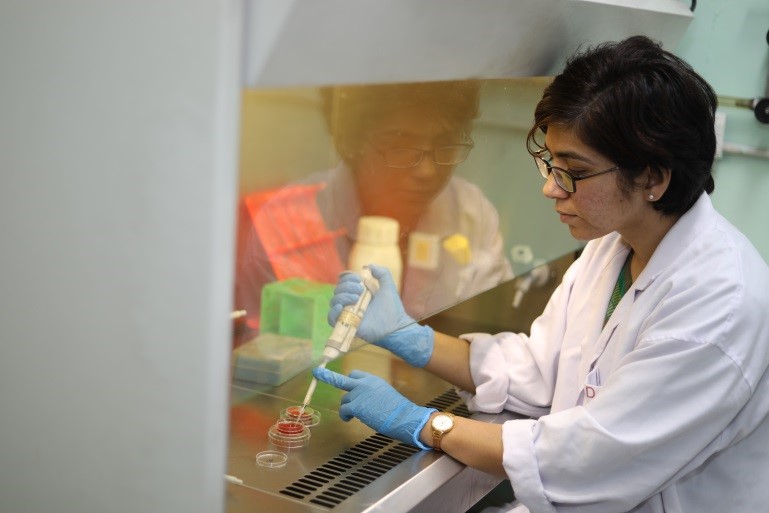Dr. Niti Kumar, Scientist at the CSIR-Central Drug Research Institute, Lucknow, a Swarnajayanti fellowship awardee of 2020-21, along with her research group, is trying to identify proteins which influence the shape-function of the single mitochondrion that the malaria parasite harbors as well as how it undergoes repair. Understanding these processes will help decipher how the parasite adapts to environmental perturbations, mitigate drug-induced toxicity (phenotypic drug resistance), drive recurrence of infection after completion of treatment, and relapse from dormant stages.
Malaria biology is an interesting field not only from the perspective of biochemical or molecular investigations, but it also allows addressing exciting cell biology/organelle-biology questions. This intracellular parasite exhibits unique organellar complexity and divergence. It harbors a single mitochondrion which undergoes dramatic morphological changes, an apicoplast (non-photosynthetic, relict plastid), very dynamic endoplasmic reticulum, and lysosomes.
So far, experimental exploration of questions related to biogenesis, division, repair of these organelles in human malaria parasites is very limited. Understanding about the fission-fusion processes in parasite organelles, especially for mitochondrion-ER-lysosomes organelle contacts, remains unexplored.
To delve into this area, her group is trying to probe into mitochondrial dynamics and inter-organelle communication during environmental stress and drug-induced toxicity.
“For pharmaceutical companies, parasitic diseases are low priority area for investments, therefore, continuous academic research efforts are required for investigating critical parasite pathways which may give hints into alternative sites or drug targets for antimalarial intervention to tackle emerging drug resistance, and this will directly translate into societal benefits,” said Dr. Niti.
Dr. Niti’s research group is using multi-pronged approaches to understand how the structurally-functionally diverged components of genome and proteome maintenance pathways give a survival advantage to the malaria parasite. It is very intriguing that despite the vulnerability to genotoxic and proteotoxic stress, the parasite maintains cellular homeostasis even under hostile conditions and is able to withstand immune surveillance mounted by mosquito vector and human host.
In addition to fundamental research, her group is also involved in the antimalarial drug discovery program and open-source drug discovery initiatives (such as Medicines for Malaria Venture). Her research group participates in exploration of the medicinal chemistry landscape to identify novel hits/leads against the drug-resistant malaria and probes into their probable mode of action to evaluate alternative sites of intervention.
“The know-how generated through curiosity-driven research explorations of parasite biology can be also extrapolated to other human pathogens and host-pathogen interactions,” she pointed out.

For more details, Dr. Niti Kumar CSIR-CDRI (niti[dot]kumar[at]cdri[dot]res[dot]in) can be contacted.






























